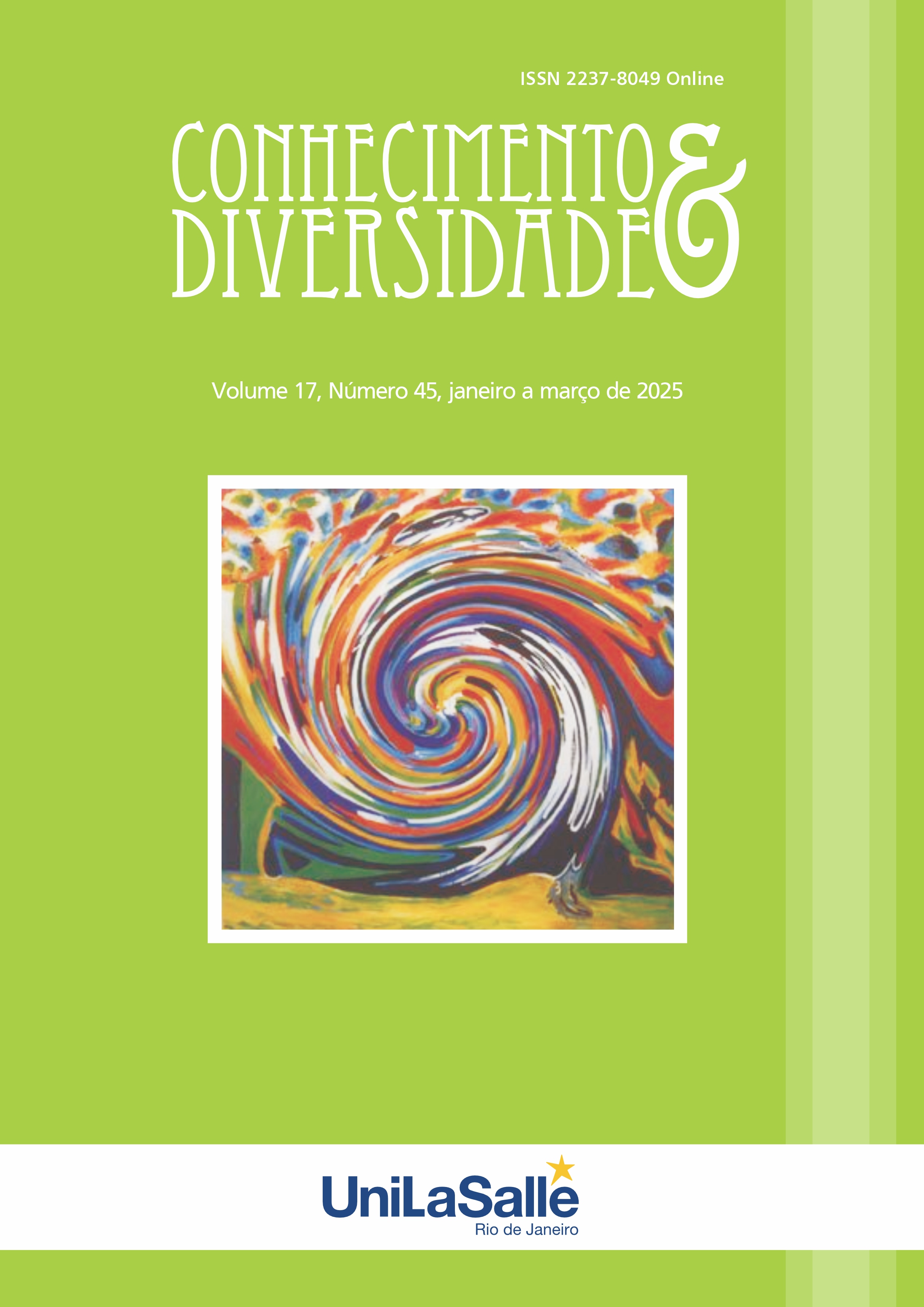PERSONALIZED LEARNER RECOMMENDATIONS
ENHANCING GROUP DYNAMICS IN COLLABORATIVE LEARNING
DOI:
https://doi.org/10.18316/rcd.v17i45.12504Keywords:
Recommendation system, Personalized learning, Collaborative learning, Digital learning environmentsAbstract
In the evolving landscape of education, effective collaboration among students is crucial for maximizing learning outcomes. Traditional methods of group formation often fail to account for the diverse skills, interests, and learning styles of students, leading to suboptimal group dynamics and performance. This study explores the application of a personalized learner recommendation system designed to enhance group dynamics in collaborative learning environments. By leveraging data-driven techniques, the system analyzes student profiles to form balanced and cohesive groups. A controlled experimental design was conducted with 60 master’s students at Ecole Normale Supérieure (ENS) of Abdelmalek Essaadi University in Morocco, divided into a control group and an experimental group. The experimental group utilized the recommendation system for group formation, while the control group was formed randomly without the system. The study measured three key dependent variables: total time invested in the collaborative project, the percentage of project tasks completed, and the frequency of interactions among group members. The results of the study indicate that the experimental group, which used the personalized recommendation system, outperformed the control group in all three measured variables. The experimental group invested more time in the project, completed a higher percentage of tasks, and demonstrated a greater frequency of interactions. These findings suggest that the recommendation system effectively increased student engagement, improved group productivity, and fostered better communication among group members. This research highlights the potential of personalized recommendation systems to transform collaborative learning by optimizing group formation. The study’s findings offer valuable insights for educators and instructional designers seeking to enhance the effectiveness of collaborative learning in digital and traditional educational settings. Future research should explore the application of such systems in diverse educational contexts and consider integrating qualitative assessments to capture student experiences and perceptions. Overall, the integration of personalized recommendation systems into educational practices represents a significant step toward achieving more personalized, inclusive, and effective learning experiences.
References
R. Burke, “Hybrid Recommender Systems: Survey and Experiments,” User Model. User-Adapt. Interact., vol. 12, no. 4, pp. 331–370, Nov. 2002, doi: 10.1023/A:1021240730564.
H.-N. Kim, I. Ha, K.-S. Lee, G.-S. Jo, and A. El-Saddik, “Collaborative user modeling for enhanced content filtering in recommender systems,” Decis. Support Syst., vol. 51, no. 4, pp. 772–781, 2011.
E. R. Núñez-Valdéz, J. M. C. Lovelle, O. S. Martínez, V. García-Díaz, P. O. De Pablos, and C. E. M. Marín, “Implicit feedback techniques on recommender systems applied to electronic books,” Comput. Hum. Behav., vol. 28, no. 4, pp. 1186–1193, 2012.
W.-H. D. Huang and K. Nakazawa, “An empirical analysis on how learners interact in wiki in a graduate level online course,” Interact. Learn. Environ., vol. 18, no. 3, pp. 233–244, Sep. 2010, doi: 10.1080/10494820.2010.500520.
X. Zhang, D. R. Vogel, and Z. Zhou, “Effects of information technologies, department characteristics and individual roles on improving knowledge sharing visibility: a qualitative case study,” Behav. Inf. Technol., vol. 31, no. 11, pp. 1117–1131, Nov. 2012, doi: 10.1080/0144929X.2012.687770.
A. Souhaib, K. Mohamed, E. K. K. Eddine, and I. Ahmed, “Adaptive Hypermedia Systems for E-Learning,” Int. J. Emerg. Technol. Learn. IJET, vol. 5, pp. 47–51, Nov. 2010, doi: 10.3991/ijet.v5iSI3.1287.
J. Lahiassi, S. Aammou, and O. E. Warraki, “ENHANCING PERSONALIZED LEARNING WITH A RECOMMENDATION SYSTEM IN PRIVATE ONLINE COURSES,” Conhecimento Divers., vol. 15, no. 39, Art. no. 39, Nov. 2023, doi: 10.18316/rcd.v15i39.11144.
R. W. JENNI and J. MAURIEL, “Cooperation and collaboration: reality or rhetoric?,” Int. J. Leadersh. Educ., vol. 7, no. 2, pp. 181–195, Apr. 2004, doi: 10.1080/1360312042000211446.
J. E. Austin, “Principles for partnership,” Lead. Lead., vol. 18, no. 2, pp. 44–50, 2000.
P. E. Leonard and L. J. Leonard, “The collaborative prescription: remedy or reverie?,” Int. J. Leadersh. Educ., vol. 4, no. 4, pp. 383–399, Oct. 2001, doi: 10.1080/13603120110078016.
“What is collaborative learning?” Accessed: Feb. 23, 2024. [Online]. Available: http://www.gdrc.org/kmgmt/c-learn/what-is-cl.html
B. L. Smith and J. T. Mac Gregor, “What is collaborative learning?‖ In Goodsell, AS, Maher, MR, and Tinto, V.(Eds.), Collaborative Learning: A Source book for Higher Education,” Natl. Cent. Postsecond. Teach. Learn. Assess. Syracuse Univ., 1992.
W. R. Klemm, “Using a formal collaborative learning paradigm for veterinary medical education,” J. Vet. Med. Educ., vol. 21, no. 1, pp. 2–6, 1994.
S. Totten, “Cooperative learning: A guide to research,” No Title, 1991, Accessed: Feb. 23, 2024. [Online]. Available: https://cir.nii.ac.jp/crid/1130282271774507136
A. A. Gokhale, “Collaborative learning enhances critical thinking,” Vol. 7 Issue 1 Fall 1995, 1995, Accessed: Feb. 23, 2024. [Online]. Available: https://vtechworks.lib.vt.edu/bitstream/handle/10919/8588/gokhale.pdf?sequence=1&isAllowed=y
G. Veletsianos, “Digital Learning Environments,” in The Wiley Handbook of Learning Technology, John Wiley & Sons, Ltd, 2016, pp. 242–260. doi: 10.1002/9781118736494.ch14.
S. Bach, P. Haynes, and J. L. Smith, Online learning and teaching in higher education. McGraw-Hill Education (UK), 2006. Accessed: Feb. 23, 2024. [Online]. Available: https://books.google.com/books?hl=fr&lr=&id=uESoQv-p8yUC&oi=fnd&pg=PP1&dq=les+advantages+of+digital+learning+environments+&ots=Mxfm2qyPIi&sig=JfklnjzRbOJx2aF3LZnHMIDqEAs
K.-Y. Tang, C.-Y. Chang, and G.-J. Hwang, “Trends in artificial intelligence-supported e-learning: a systematic review and co-citation network analysis (1998–2019),” Interact. Learn. Environ., vol. 31, no. 4, pp. 2134–2152, May 2023, doi: 10.1080/10494820.2021.1875001.
Downloads
Published
Issue
Section
License
Copyright (c) 2025 Jalal LAHIASSI, Souhaib Aammou, Youssef Jdidou

This work is licensed under a Creative Commons Attribution 4.0 International License.
As recommended by the Public Knowledge Project, RCD adopts for its articles a CREATIVE COMMONS Attribution CC BY 4.0 license.
This license allows others to distribute, remix, adapt and build upon your work, even commercially, as long as they credit you for the original creation.
This is the most appropriate license offered.
Recommended for maximum dissemination and use of licensed materials.



